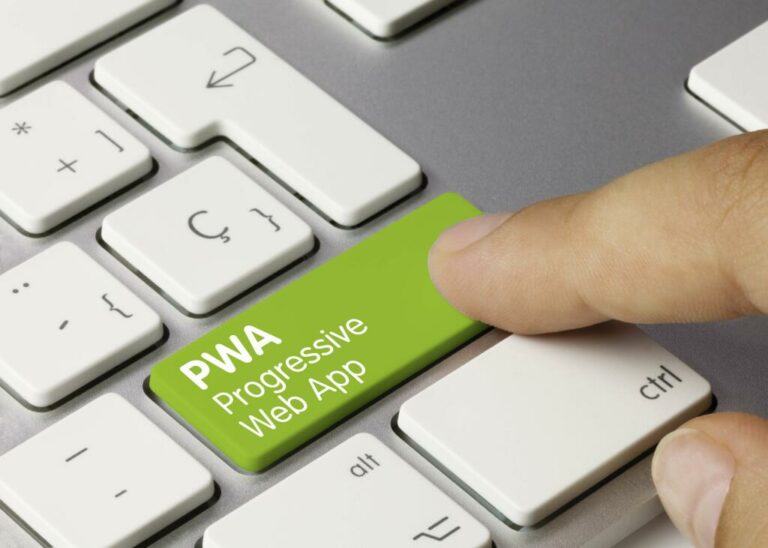Content
- Continuous integration vs. delivery vs. deployment
- Product information
- Best Agile Testing Tools (Free and Paid) in 2022
- Software Engineering at Google
- Continuous Integration vs Continuous Delivery
- Difference between Continuous Integration, Continuous Deployment and Continuous Delivery
- Dev Leaders Compare Continuous Delivery vs. Continuous Deployment vs. Continuous Integration
Continuous Deployment is a special case of Continuous Delivery in which every change in source code is deployed to production automatically, without explicit approval from a developer. A developer’s job typically ends at reviewing a pull request from a teammate and merging it to master branch. A CI/CD service takes over from there by running all tests and deploying the code to production, while keeping the team informed about outcome of every important event. This also requires a high culture of monitoring, being on-call and recovery. Continuous Delivery benefits business users because as soon as code is successfully accepted in the CI stage and a logical function can be tested, it is released to users. They verify that the features meet their expectations and provide feedback to developers who then address the feedback in this stage.
How automation helps secure the CI/CD pipeline, Buildkite raises $21M – VentureBeat
How automation helps secure the CI/CD pipeline, Buildkite raises $21M.
Posted: Tue, 15 Nov 2022 15:00:00 GMT [source]
This valuable resource for business professionals, software engineering managers, senior developers, and architects will also explore how containers and Kubernetes interact in this environment. Marko Anastasov is a cofounder of SemaphoreCI.com, a hosted continuous integration and deployment service. Anyway, this set of interconnected practices is a great tool for developers to make customers happy and developers professional.
Continuous integration vs. delivery vs. deployment
At the highest level, all of these terms focus on the ability to plan, develop, and deploy applications in a quick and effective manner. These terms are still in the process of being more concretely defined in the tech industry. The key is to approach each project and understand the end user to determine which approach you want to take.
Let’s investigate what are the challenges we might face when we adopt continuous delivery. Configuration properties, requirement documents, test scripts, database creation, upgrade, https://globalcloudteam.com/ downgrade & initialization scripts, technical documentation etc should be always available to everyone. Implement Continuous integration process along with Continuous delivery.
In this article, you’ll learn what benefits individual practices bring, what challenges they pose, their workflows, goals, tools, best practices, and more. We use Agile software development with DevOps acceleration, to improve the software delivery process and encourage reliable releases that bring exceptional end-user experience. Being specific about continuous delivery, it fulfills a greater segment of the entire software delivery process and provides greater advantages for the common users.
Which – if successful – kicks off the Continuous Delivery pipeline that implements the definition of done. Deployment is just one of the many actions that will have to be done continuously in this pipeline. Ideally, the process is automated from the point where the developer commits to the VCS to the point where the pipeline has confirmed that we have a valid release candidate. A release can be a very strategic or political thing and there is no reason to assume that everybody would want to do this all the time .
Product information
In this phase, functional and performance tests are run against the application. Continuous integration is the foundation for other “continuous” processes. And so, it’s essential to incorporate best practices for CI and CD into your workflow to get the most out of your entire software delivery pipeline. New features and improvements in the product are still delivered manually. So, generally, businesses would need to adopt continuous deployment to automate this process. However, this process of validating an artifact should be as fast and effortless as possible.

We should invest in strong reliable servers for our integration and deployment process. Get the appropriate tools either from the market or opensource do some trials to know which suits our requirement. A comparison of continuous integration vs. continuous delivery shows that continuous delivery completely forgoes interim code release.
Before proceeding with this discussion comparing the implications of continuous delivery, continuous integration, and continuous deployment, let us understand the terms first. We want you to remember the block tower image next time you think about continuous integration, continuous delivery, and continuous deployment. It will help you get it right and not forget the critical elements required to move from one to another. One of the significant benefits of continuous integration is to detect errors quickly and find them more easily.
Bob makes the changes in John’s code by pulling it from Source Control and can add or delete a line of code. Armed with an understanding of those terms, I’ll then explain how these processes fit into the modern environments of containers that run in managed clusters in the clouds. Christopher Tozzi has covered technology and business news for nearly a decade, specializing in open source, containers, big data, networking and security.
It allows developers to dramatically reduce the gap between what is on a programmer’s desk and what is in production, which is always a risk. Development teams can take advantage of Continuous Integration by deploying a solution such as Jenkins, the ci cd maturity model most popular open source tool in the space, and configuring it to build and test their code. Continuous Delivery usually involves other DevOps-related tools like Puppet, Chef, Ansible, or SaltStack to install and configure environments for testing.
Continuous deployment is the deployment or release of code to production as soon as it’s ready. There is no large batching in staging nor a long UAT process before production. Any testing is done prior to merging to the Mainline branch and is performed on production-like environments. The production branch is always stable and ready to be deployed by an automated process.
Best Agile Testing Tools (Free and Paid) in 2022
In theory, with continuous delivery, you can decide to release daily, weekly, fortnightly, or whatever suits your business requirements. However, if you truly want to get the benefits of continuous delivery, you should deploy to production as early as possible to make sure that you release small batches that are easy to troubleshoot in case of a problem. Developers practicing continuous integration merge their changes back to the main branch as often as possible. The developer’s changes are validated by creating a build and running automated tests against the build. By doing so, you avoid integration challenges that can happen when waiting for release day to merge changes into the release branch.

CI/CD can reduce code integration workflows that are no longer needed, thereby also eliminating unnecessary team communications. This constant monitoring for improvement helps drive adoption even as the user base and usage patterns change. Bookmark these resources to learn about types of DevOps teams, or for ongoing updates about DevOps at Atlassian. The quality of your test suite will determine the quality of your releases.
Software Engineering at Google
I would genuinely like to know if any agile teams actually reach this stage, without having complaints at the standups that the expected time alotted for delegated tasks is unreasonably short. Atlassian posted a good explanation about Continuous integration vs. continuous delivery vs. continuous deployment. CI/CD also helps reduce dependencies within teams, which means developers can work in silos on their features with the confidence that code will integrate without failing. The ability to integrate developers and processes through CI/CD can increase productivity and collaboration among teams working on a project, especially when those teams are scattered geographically.
- First of all, we will consider an old approach that existed before the DevOps was introduced.
- Because continuous delivery is a logical next step in the software development pipeline after continuous integration, it makes sense to first have a CI process in place.
- As the deployment process doesn’t pause the flow, developers can focus on coding.
- A software delivery pipeline generates releases from source code in a fast, automated, and reproducible manner.
- The automation tools move the tested and integrated software to places where it can be deployed to end users, such as an app store.
Continuous deployment strategies usually involve incremental deployments that allow changes to be tested incrementally. Continuous delivery expands upon continuous integration by deploying all the code changes to the testing environment and later to the production environment after the build stage. When correctly implemented,this will allow developers to always have a deployment-ready build that has passed all the standardized test processes.
Continuous Integration vs Continuous Delivery
In the most efficient situations, the CI/CD pipeline is a fully automated toolchain that ends in running software. This allows developers to focus on writing code and not on the minutia of build/test/deploy. Essentially, CI/CD provides developers a reliable path to deliver their technology to users. In CD, automation is the key, it reduces the human intervention and speeds up the process. Implementing it is not easy as it sounds, we need a lot of tools, resources, infrastructure, and training to establish this process. As noted above, software development teams usually access several development and testing environments for testing and review of application code.

If it reaches a stage where a broken build becomes the norm, defects may start accumulating on top of each other. The application can be deployed with the push of a button to a production-like environment then. Technology Stack Adopt the latest technologies for your digital productTechnology Stack Technology stack says a lot about your engineering expertise and company culture. The right tech stack enables successful product development, short time to market and fulfillment of customer needs. Simform is under review for a CMMI Level 3 company and ISO certification, indicating that our processes, procedures, and methods are standardized and performing at a defined level.
Difference between Continuous Integration, Continuous Deployment and Continuous Delivery
Continuous integration as a practice addresses this by encouraging everybody to work from the same shared source. Individual work items should be discrete enough to be completed in a short amount of time . Continuous Integration is a strategy for how a developer can integrate code to the mainline continuously – as opposed to frequently. After development teams determine how a portfolio will be aligned in a CI/CD model (that is, how a portfolio’s assets will be grouped), teams should make decisions about who will work where. Know which assets support each process and capability and group them accordingly.
Automated scripts for deployment should run properly, else the team must resort back to the manual task. For creating such automation test suits, we need several servers and environments. For automating the test during code integration, we must develop scripts for every new feature or bug fix. Build- It is the process of converting a piece of code into an executable software that would run in the required environment. Deployment – It is the process of pushing the changes or updates from one environment to another. CI allows developers to work independently on different features in parallel.
Software development models in comparison
Our WordPress guide will guide you step-by-step through the website making process… Office Microsoft 365 / Office 365Powerful Exchange email and Microsoft’s trusted productivity suite. The first three steps have to do with Tests, extending the boundary of what’s being tested. From Observations to Designs the goal is to get high quality testable ideas.




















